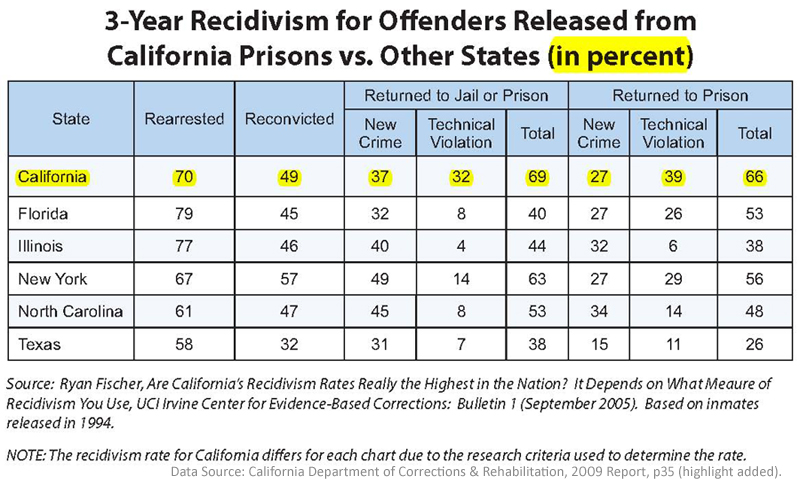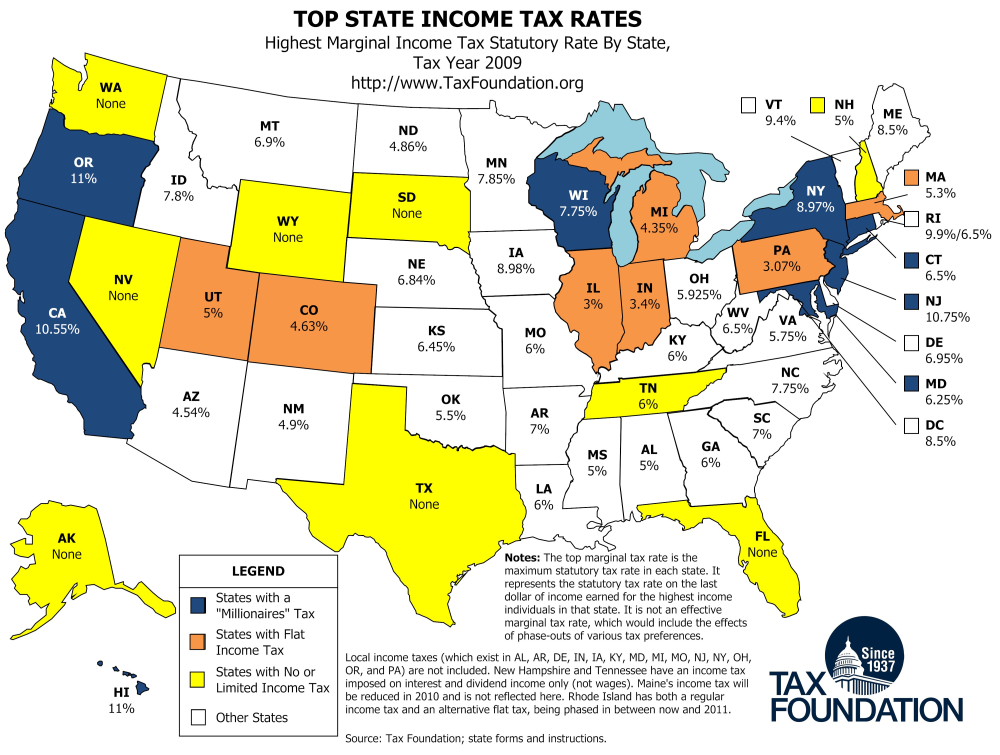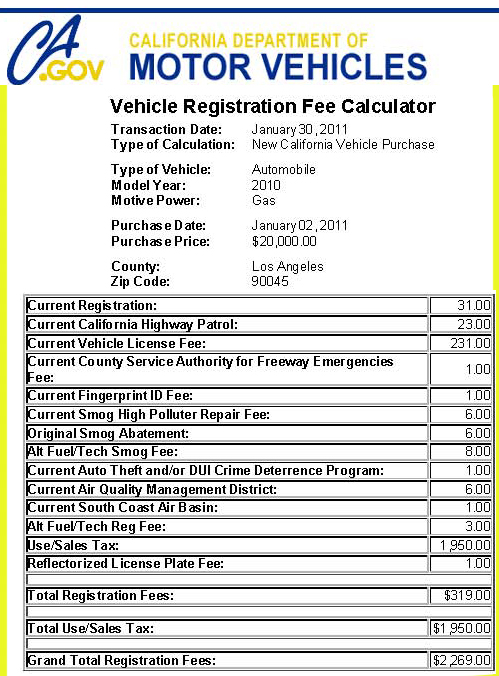02.01.2011 original publish date
04.12.2012 repaired broken links
11.19.2012 additional updates, salaries and Prop 98 facts
02.19.2017 The LA Times links used in this report that are lined-out have been moved or deleted. Data accurate at date posted.
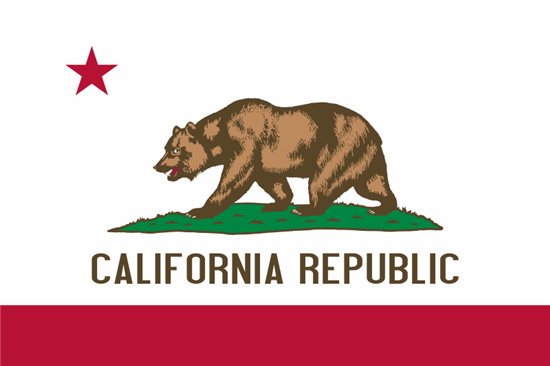
Proposed Budget for the State of California
written by Net Advisor™
EXCERPT:
The State of California is facing annual and growing budget crisis. The state implemented decades of social welfare and failed policies then sought to fix them by not eliminating them, rather instead continue to find new ways to tax its citizens. The state is arguably controlled by the state employees and other unions who have sought to keep the status quo and insure that their high state wages, taxpayer subsidized health care and generous pension programs stay preserved and grow at all costs. The state has threatened that education, the elderly, children, and even the blind would all suffer unless there are some (trivial) cuts along with new higher tax increases in order to solve the state’s overspending problems.Voters in the 2010 mid-term election sought to keep many of the same elected officials who contributed to the state’s fiscal woes, and even added back a governor who has a history of supporting social and union causes. The state must address the real issues of how it manages its money. The following 24 page analysis derived with a base framework from a Los Angeles Times interactive graphic to help take the state from a $28 Billion deficit to $1.336 Billion surplus.
Current State Budget: $90.8 Billion
Fiscal Deficit (Due to CA Government Over Spending): <$28 Billion>
Where the State Spends its Money
39.8% K-12 Education = $36.1 Billion
29.0% Welfare (Health & Human Services) = $26.3 Billion
12.7% Colleges and Universities = $11.5 Billion
9.8% Public Safety = $8.9 Billion
8.8% “Other” = $8 Billion
Proposed Budget for the State of California
(subject to revision)
Part I: Education Funding for K-12 Schools
Through a previous voter-approved constitutional amendment, about 40% of the states revenue must go toward K-12 education. California will see a further cut of $2.2 Billion in federal education funds this year (Source: LA Times). California has seen its tax revenue drop significantly, yet spending for services has not been adequately cut pro rata.
“State tax collections, adjusted for inflation, are now 12 percent below pre-recession levels…while the need for state-funded services has not declined.”
— Source: Center on Budget and Policy Priorities
Option 1 – Maintain Current Funding Level
“Make up the difference in the lost $2.2 billion in federal funds that cushioned school budgets this year. Keeping schools funded at the current level would deepen the state deficit” (Source: LA Times).
Increase deficit to $30.2 Billion
Proposal: No.
Option 2 – Provide Minimum Funding
“Fund schools at the minimum level guaranteed by the state Constitution, a cut of roughly $326 per pupil from current budget” (Source: LA Times).
Keep status quo, however problems still remain. State Deficit: <$28 Billion>
Proposal: No
Option 3 – Cut Per Pupil Spending
Note: This option has changed
“Lawmakers can suspend the Constitution, allowing deeper cuts to be made. Slash funding by as much as half the current minimum to save up to $18 billion. Cutting spending by a little more than 10% would save the state $3.7 billion. Cutting spending by 20% would save the state $7.2 billion. Cutting spending by a 30% would save the state $10.8 billion. Cutting spending by 50% would save the state $18.05 billion”
— Source: LA Times
The only problem with this is that under Proposition 98, passed in 1988, lawmakers CANNOT supersede the state constitution without an amendment to Prop 98, which would require a public ballot measure to amend the state’s Constitution.
(California 1988): “Proposition 98 requires a minimum percentage of the state budget to be spent on K-14 education, guaranteeing an annual increase in education in the California budget. As a result of Proposition 98, a minimum of 40% of California’s general fund spending is mandated to be spent on education…”
— Source: BallotPedia.org
In 2009, California ranked near the bottom, 49 out of 50 states in education. The U.S. as a whole spends more on education than any other country in the world by $100’s of billions a year (Source: United Nations).
Challenge: The state and unions always seems to focus on how kids are hurt by education cuts while leaders seek to maintain their high salaries and benefits. Here is the typical argument:
“Jack O’Connell, the school superintendent, has said the (state) cuts would also result in larger class sizes, canceled summer school and no new textbooks” (Source: NY Times).
The key is going after the “fat cats” in Administrative areas and cut those budgets, departments, higher salaries, and generous benefits first, BEFORE cutting teachers, and making some ridicules argument such as schools would be unable to afford new text books. Try not to get mislead or sucked into the emotional argument that creates a diversion from the real problem. Try to focus on where the real money in education is being spent. It’s not on the kids.
Reality Check: Most of the Education Money Not Going to Education
As someone who volunteered to sit on a California school’s site council for 2 years and helped advise over budgetary issues, I had been frustrated at how we could not touch the roughly $1.9 Million overhead budget. The amount of funds available for kids after paying for ELL (“English Language Learners”) – those are kids whose primary native language is not English; and after paying other state mandated programs our budget was trivial. In 2009 it was about $62,000 before further state cuts. That’s right, $62,000 for the kids “K-5” (Kindergarten to 5th grade) and about $1.83 million for school overhead, salaries, and maintenance.
Of the initial (before it was cut again) $62,000 discretionary budget, about $30,000 allocated for K-5 school supplies, $17,000 (or $14.80 hr) for paying teachers extra money to watch the kids on the playground at lunch time called, “noon-duty;” $12,000 to maintain a copy machine which the district has control over changes here; and $2,000 for clerical work, all subject to revisions. Thus about 97% of the school’s annual budget which we were supposed to oversee, could not be touched in any way. No money could come out of that and go to any kids program.
Since K-12 education is relatively uniform in terms of structure in at least California, one might extrapolate and raise the question of how much money is actually going to kids education and how much is really administrative overhead?
For those not familiar with California’s English Language Learner program, ELL is not a program for kids learning how to learn language per se, it is specifically for kids who come from homes where English is either not spoken or is not a primary language. The majority in this group tends to be from California’s southern border. This can further raise issue to state tax payer costs of illegal immigration. California does not ask if a student is legal or not, only that they live in the school district and have proper vaccinations.
After studying this area, what people will find is that education is not about kids; it’s about money (salary), benefits, low cost to virtually free health-care, and generous retirement pensions. This is what should be cut first. Since this option was not available in this budget exercise, the alternative is a 20% across the board education cut. Again, there are better solutions, the question is, does the state have the will to do what it must to fix the system? I would argue not when the control of the state are in the more union-backs hands.
Most of education spending does not go to actual education. Actual teacher-student education in itself does not have to be cut. There are plenty of areas of highly compensated mostly political persons whose jobs we can eliminate or cut back on their high salaries. An independent analysis and implementation free from political influence would solve many of California’s financial problems.
Cut 20% (Measure should be implemented first such as cutting Administration and said related costs).
Saves: $7.2 Billion
Reduces current deficit to: <$20.780 Billion>
Part II: Welfare: Health and Social Services
This area is one of, if not California’s biggest problem – being a social welfare state.
“Healthcare and welfare for the poor make up roughly 30% of the budget — the second largest item after K-12 schools.”
— Source: LA Times
Now what the Los Angles Times assumes is that the “poor” includes anyone living in California. This includes illegal immigrants who reportedly cost California tax payers $10.5 Billion a year for health, welfare, education, housing criminals, etc. (Source: usgovinfo.about.com). Cutting this, would reduce the states deficit by 38% to 50% in a single effort depending on what budget math is being used.
The Times also reported in 2009 that due to state budget constraints non-emergency health-care was eliminated to illegals in California. This represents about $1.4 Billion in 2004. However, the cost to educate illegals in California still remain at some $7.7 billion a year. The growing population from illegal immigration in the state’s educational system now represents 15% of all of California’s K-12 schools (Source: usgovinfo.about.com).
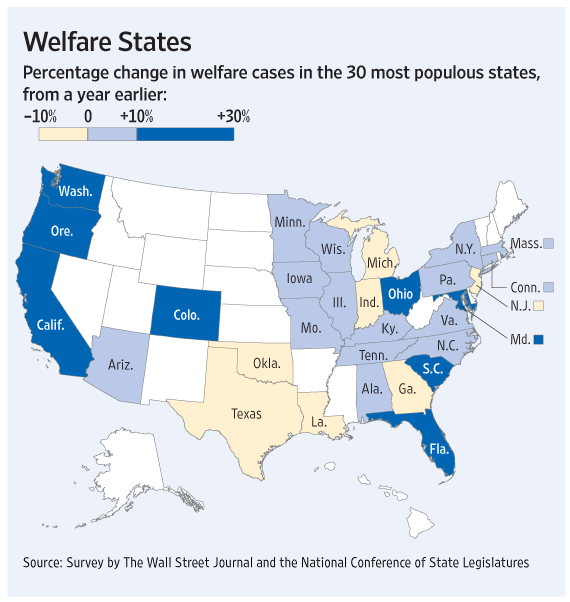
Welfare
Next, one of the big issues California has is that the state attempts to support way too many people. Twenty-nine percent (29%) of the state’s budget is spent on welfare, health related care, and parental-child care programs. This is the second largest part of the budget after education. Welfare benefits are even being paid to people who don’t live in California.
In 2010, a Los Angeles Times report showed that some $69 million in California welfare money is being paid to people who don’t live in California. Millions was paid to people who live in Nevada, Hawaii and who were on cruise ships.
California is so broke; it has to borrow money in order to pay for state unemployment claims.
On November 7, 2010, the San Francisco Gate/ LA Times reported that the State of California borrows $40 Million a day to pay for state unemployment.
Suggestion: Cut: $4.178 Billion total from the State Budget in this area.
Next, “Cut welfare recipients and services. About 1.3 million people, including about 1 million children, currently get help. Cuts would cost the state up to $3.7 billion in federal matching money” (Source: LA Times).
Cut 100%
Saves: $2.1 Billion
The Obama Administration’s 2009 national health care reform plan is to insure all those who are uninsured or who don’t or can’t afford insurance, all can now transfer to this program. Although the Obama Care program is likely to be edited, it does not seem likely that it will be 100% repealed at this time. But if it is, I would expect that these social issues would be addressed. The transfer of people from the state to the federal program could save the state $2.1 Billion.
In-home Services
“Cut in-home care for the elderly, blind and disabled. Deep cuts to the 450,000 now served would probably increase Medi-Cal costs because some people would move to nursing homes” (Source: LA Times). Again these costs are health insurance related. Private insurance should be picking up the slack, as opposed to state welfare. Citizens should be the ones paying for these services. In the event there are critical needs for insurance coverage, this should move to the national health care program saving the state $1.2 Billion. Health care is not free, and the state can’t afford free or virtually free health care.
Cut 100%
Saves: $1.2 Billion
Child Care
“Cut day care services available to working parents in welfare-to-work programs. Currently about 55,000 children are served” (Source: LA Times). Why the state is paying $385 Million a year for daycare for working parent(s) is absurd. Currently, this costs the state $7,000 per yer per child ($385 Million divided by 55,000 kids in daycare = $7,000).
Alternative solutions: Extended family members to help take care of children verses total strangers: Cost: $0.00 If one can’t afford or be there to raise their own children, should one be having children where the state picks up $385 Million in costs? Those having children to increase their welfare checks, the state might look into limiting funding to prevent abuse. There are also organizations where adoption may be an option; Planned Parenthood for using safer sex such as birth control may be another option. Regardless of the options, if one is working and plans to use daycare that is their financial responsibility, not the state tax payer’s responsibility.
Cut 100%
Saves: $385 Million
Medi-Cal Services
“Limit prescription drug coverage, doctor visits and other care available to Medi-Cal patients and raise co-pays for hospital, doctor, dental and pharmacy services” (Source: LA Times). Again, these are health insurance issues and the suggestion is to move these claims to the national ObamaCare plan, or use private health insurance, either way saving the state $280 Million.
Cut 100%
Saves: $280 Million
Grants to Elderly and Disabled
“Fund only the federal minimum, $830 per month, for aid to blind or disabled children and adults, and the elderly” (Source: LA Times). If this program could be not federally qualified, then the state under this proposed plan would have the funds to pay 100% for this program.
Cut 0%
Cost: <$182 Million>
Eliminate Medi-Cal Services for Recent Legal Immigrants.
Basically what this means is that those who were illegal and just became a legal immigrant, but not yet qualified as a legal citizen of the United States currently receives some $120 Million a year. The state just can’t afford this welfare program for anyone who comes to the U.S., gets a green card, becomes a temporary worker, etc., then immediately qualifies for another state welfare program. Suggestion: Use non-profit clinics, or local county funded programs instead.
Cut 100%
Saves: $120 Million
Drug and Alcohol Programs
Reduce funds for state funded drug and alcohol programs. These programs can be funded by private insurance, national insurance, and or by non-profit groups such as AA who may also receive federal grants. The argument is, if one has a drinking or drug problem, why do tax payers have to pay for it? If one has money for booze and narcotics, they have something to contribute to AA or other non-profit program.
Cut 100%
Saves: $93 Million
Organizations Who Can Help the Truly Needy
Now there is undoubtedly a huge emotional argument here; that we have to help whomever for whatever extreme situation may present itself. The net result of this budget proposal is a surplus of over $1 Billion. Those funds can then be relocated back to critical needs.
An alternative is to consider opening up a dialog, or greater dialog with religious and other non-profit organizations that do business in California and throughout the world. These organization are in the business of giving and contribution, are tax-exempt, and their assistance to help the truly needy can reduce or even eliminate some to all of California’s social welfare programs. To give one an idea how much money is being voluntary given to support causes, here it is:
In 2009 and during a major recession Americans contributed over $307 Billion to their favorite causes.
— Source: NPS.gov PDF, 6pps
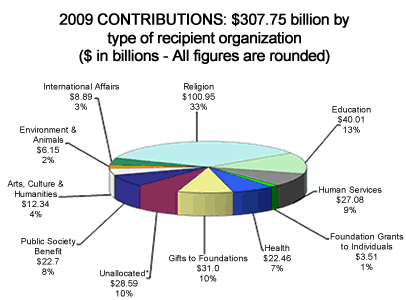
Non-profit organizations such as Southern California’s TBN reportedly was holding on to some $340 Million (Source: MinistryWatch.com PDF, 6pps). The Red Cross brought in $3.3 Billion in total revenue in Fiscal year 2009 (Source: Red Cross, PDF, 74pps, Page 1, FY2009 Tax Return). The Red Cross also spent $59.8 Million on just computer, networking and IT services in 2009 (p73, FY2009 Red Cross Tax Return). The Salvation Army whose mission includes maternal and child health reportedly served to help people in 57 counties around the world but allegedly did not help a single person of need in the USA (Source: Salvation Army 2010 Annual Report, Map P3; of 14pps, PDF).
Now this is not to be critical of these organizations who seek to do great work for many people. Just that a suggestion to the organizations that there are people of high need, homeless and hungry in this state and country too who might be considered in their annual contributions.
Part III: Colleges and Universities
“In 1990, the state paid 78% of the cost of educating a University of California student; now that figure is 48%, according to UC. Enrollment at California State University campuses has shrunk, and faculty in both the UC and Cal State systems have faced furloughs. Mmeanwhile, student fees have roughly tripled in the last decade. Community colleges serve 2.5 million students each year, with fees, at $26 per unit, the lowest in the nation. Recent cutbacks in that 110-campus system have reduced class offerings” (Source: LA Times).
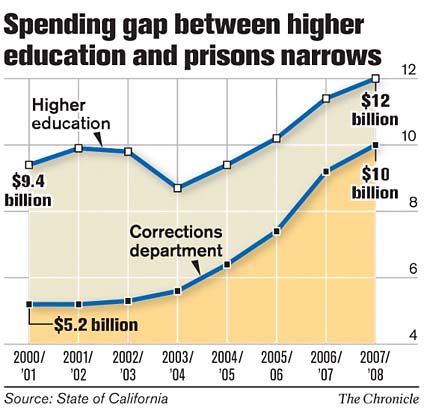
Why the High Costs of Education?
The state wants to cut funding to state colleges and universities, raise tuition on students, but will students get a better education? Absolutely not. The problem is that high Administrative salaries, generous retirement pensions, and other benefits are arguably taking up most of the state’s (taxpayer) money. The state must address this before cutting student programs, increasing tuition and fees, or begin teacher layoffs. Here are some examples of the reckless spending by the state toward Administration compensation and benefits.
“The California State University Board of Trustees unanimously approved incoming Cal Poly President Jeffrey Armstrong’s contract…making him the highest paid president in the 23-campus system. Armstrong…will receive an annual salary of $350,000…(plus)…a $30,000 annual supplement form the Cal Poly Foundation, up to $1,000 a month car allowance and a temporary housing stipend of up to $5,000 a month while his future home, the University House, is being renovated.”
— Source: 920 KVEC News-Talk Radio, Jan 27, 2011 (PDF)
A report published by the San Francisco Chronicle discussed that in 2006-2007 there were over 17,000 University of California employees who earned over $100,000 a year. This amount does not include retirement pension, health care or other benefits.
“In the 2006-2007 fiscal year, the UC system had more than 17,000 employees with total pay over $100,000.”
— Source: The Daily Californian
Of the 250,000 people who were employed in 2007 by the UC system, there were 3,018 who had gross pay of at least $200,000 (Source: OC Register). The pay for more highly compensated employees has only increased since the start of the 2007- U.S. and California recession.
“In the 2008 calendar year, the U.C. system had more than 21,000 employees with total pay over $100,000. In addition, 537 employees made over $25,000 just in overtime pay.”
— Source: San Francisco Chronicle
One might think that with California’s high unemployment, less income tax revenue for the state, and a record budget deficit, why is the state increasing salaries to Administration?
In 2008, there were 8 people in the UC system making over $1 Million a year. The highest paid being Cal Berkeley’s head coach Jeff Tedford who made over $2.3 Million in 2008. Now, Tedford did take about a $400,000 pay cut (story link gone) from 2007. On 12-27-2008, Cal football (Ranked #24) and played in the Emerald Bowl that brought in the school an estimated $750,000 to $825,000 (PDF).
See list of those with gross pay of $400,000 or more in the UC system for 2008 (PDF 30 pps).
Suggestions:
- Change salary to absolute minimum and offer a pay-for-performance. If coaches win big games, and the school receives more money, coaches can profit on those wins. Losing coaches should not be highly compensated.
- Change the pension plan to a 401(k) retirement system for all new employees like everyone else has in the private sector. Why should government have a better, more secure and guaranteed retirement plan than everyone else?
- Review and cut state salaries of highly compensated individuals to match performance and in-line with the private sector.
If the state does not address the above issues, the only other solution is likely to cut funding to students. Not the best idea.
Cutting: $8.643 Billion Total
Funding for UC Campuses
“The state pays roughly $12,900 per full-time student at UC, for a total of $2.7 billion. Cuts to that subsidy would probably result in higher tuition or reduced course offerings” (Source: LA Times).
Again, the state seems to just put the problem on students to pay for the costs, instead of address where the true costs of education is going. Since that alternative (cut Administrative salaries and budgets) was not an option using the LA Times model, the shown cuts in education are the only option.
Cut 100%
Saves: $2.7 Billion
Funding for Cal States
“The state pays roughly $7,500 per full-time student at CSU campuses, for a total of $2.5 billion. Cuts to that subsidy would probably result in higher tuition or reduced course offerings” (Source: LA Times).
The state can’t go into debt to help people others go into debt for going to college. The cost of and education is not free. K-12 is funded by taxpayers by law. College should be covered by those attending and reaping the benefits. There are billions available in loans, federal grants and private scholarships for those willing to apply themselves.
Cut 100%
Saves: $2.5 Billion
Existing CalGrants
Eliminating financial aid (CalGrants) for some 211,000 students attending any CA public, private college or university (Source: LA Times). An alternative is noted below under The Federal Take Over of Education (below).
Cut 100%
Saves: $1.2 Billion
New CalGrants
Eliminating all new CalGrants financial aid awards which may impact some 80,000 students attending any CA public, private college or university (Source: LA Times).
Cut 100%
Saves: $316 Million
Close Community Colleges
Option as to whether to close some or all of the 110 community colleges which reportedly have been the typical gateway into state and UC schools looking to obtain an undergraduate degree (Source: LA Times).
Proposal: Cut approximately 50% (close about half of non-performing campuses, satellite campuses, concentrated campuses in close proximity to each other where duplication may not be necessary, and or close those with the lowest transfer rates to 4-yr schools. Impact on students: Students committed to education may have to drive a bit further to go to some schools.
Cut $1.927 Billion
Costs: <$4.1 Billion>
Funding for Community Colleges
The question whether to increase student fees, currently the lowest in the nation, from $26 per unit to $40 (Source: LA Times).
Cut 0% (keep tuition same)
Costs: <$150 Million>
The Federal Take Over of Education
The Obama Administration took over the entire Federal Student Loan program in 2009. This effort was slipped into the Obama Health Care bill (Sources: NY Times, FOX News). What does health care and student loans have in common? Nothing of course but in the 2,454 page Obama Health Care Bill, there should be some other programs that have nothing to do with health care reform (Video). With that said, the Federal government wanting to takeover education, California can decrease or end subsidies and refer grants and other federal government subsidized programs, saving the state $8.643 Billion.
Part IV: Public Safety
Like many states, California has a problem with overcrowded prisons. The cost of housing inmates has become a rapid growth expenditure. Part of this prison inmate increase is reportedly due to the three-strikes law where state courts can lengthen the prison sentence on those found guilty committing three or more serious offenses. Federal courts recently seized control of providing (free) medical care behind bars after inmates died from a lack of care. This move has further driven up the costs for managing prisoners (Source: LA Times).
Proposal: Eliminate free healthcare for prisoners. Everyone else pays for health care, why should those who committed crimes against society benefit with free healthcare?
Cutting: $365 Million Total
Release Prisoners
The State of California already placed 123,597 felons and civil drug addicts on parole, and the state seems to just let more and more felons out early.
“On December 31, 2008, there were 123,597 felons and civil narcotic addicts on parole in California, a 2.6 percent decrease from 2007. During 2008, 142,954 offenders were admitted to an institution as a new admission or a parole violator and 139,535 offenders were paroled, discharged or otherwise released from custody.”
— Source: California Dept. of Corrections & Rehabilitation, 2009 Report, PDF, p26; of 44 pages.
The State of California was sued in a 2009 case by Plaintiffs lead by Ralph Coleman citing a June 2004 Corrections Independent Review Panel Report that apparently said, “The state has been widely criticized for not doing a better job of preparing inmates to return to society” (COLEMAN v. SCHWARZENEGGER (PDF Link) P37-38; of 184pps). The result of this stemmed from two separate lawsuits filed by Marciano Plata and Ralph Colman who complained about “prison health care and mental health services.” Both Plata and Colman are serving time in state prison (Source: Wall Street Journal).
You heard that right. Attorneys on behalf of prisoners argued that it is the state’s responsibility, not the prisoner’s own responsibility to “reform” criminals and make them good upstanding citizens again. Apparently someone wrote that ideological law in the books, and of course like most government ideological programs, this one costs a lot and doesn’t work either.
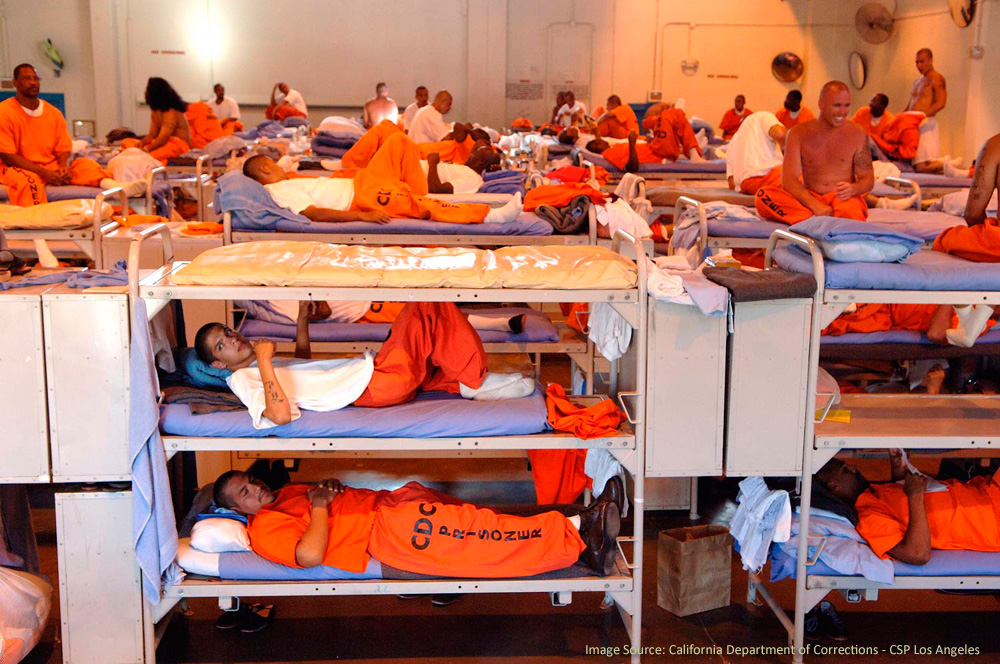
Court Favors The Prisoners?
In 2010, a three-judge U.S. Supreme Court panel ruled in favor of the Plaintiffs (the prisoners, and their lawyers). The high court ordered that California’s state prison population cannot exceed 137.5% of capacity. Thus the state may have to decrease its prison population by up to 40,000 inmates.
One judge said that California’s state prisons’ health care amounted to “cruel and unusual punishment” (Sources: CS Monitor, in re COLEMAN v. SCHWARZENEGGER (PDF Link) Court Order, P183; of 184pps). In 2009, the state of California spent over $2.1 Billion, or roughly 20% of its entire annual prison budget just on health care related services for inmates (Source: CDCR 2009 Report, PDF, p3).
The Wall Street Journal reported that 18 states backed California and filed a legal brief that argued against the three judge-panel. The 18 other states said that the “release order did not correctly interpret the law and threatens public safety.”
4-Part Problem
(1) Whether a court can force a state to release prisoners because there are too many of them due to overcrowding, or because they aren’t getting certain health care to their satisfaction.
(2) Should the court consider public risk of releasing known felons? Does the public have a say in this matter? Does the public have right to be secure?
(3) Why has the state not expanded the existing prisons if not build new ones?
(4) Why has privatization not worked? Has the state attempted the privatization of prisons? What were the findings? Were the findings complete? Are there other alternatives?
Currently the state spends an average of $51,000 per year for each prisoner. Releasing 40,000 of the state’s 170,000 prisoners is estimated to save just over $2 billion says the Los Angeles Times.
Proposal: Cut 0%
Costs: <$2.04 Billion>
Subsequent Proposal: Enforce the death penalty for capital crimes including multiple murders, violent felons, known violent gang affiliation with convicted violent crime history serving a life sentence, a life sentence with no parole, and crimes against children (pedophiles) etc., would save the state millions if not 100’s of million or more instead of housing them for life. If the Courts determined that these people will never be fit for society due to their heinous crimes against upstanding adults and innocent children, do we need to spend $51,000 a year each and over $2 billion more to provide them with heath care until they die of old age?
California reportedly had 709 executions before 1976, and only 13 since (Source: DeathPenalityInfo.org). The state has 697 persons on death row thus costing the state $35.547 Million a year (Cost $51,000 per inmate x 697 on death row = $35,547,000/ per year ). That savings could pay for health care for 14,811 children at the rate of $200 per month or $2,400 per year.
Illegal-immigrant Inmates
The Los Angeles Times reported, that state has attempted to deport some 19,000 illegal-immigrant inmates to federal authorities with no success.
Cut 0%
Costs: <$106 Million>
Proposal:
- Sue the federal government to enforce border security; recoup costs for failing to control borders as a Constitutional duty to “protect and defend” the Constitution of United States (Source: U.S. Constitution, Article II, Section 1).
- Worse case: Call the Sheriff. Place illegals on sheriff buses. Drive to the appropriate border. Deport. Next time, enforce border security.
COPS Program
A proposal to “eliminate up to $100 million, or all funding for the Citizens’ Option for Public Safety Program [COPS], which pays for enhanced public safety services for local law enforcement entities” (Source: LA Times).
Cut 0%
Costs: <$100 Million>
Comment: A small price to support law enforcement.
Money Not Well Spent
The prison system is something that is not going away, and the amount of money attempting to rehabilitate offenders does not seem well spent. The state spent over $631 Million in 2008-09, and over $617 Million in 2009-10 budget for combined adult and juvenile education-related programs (Source: CDCR 2009 Report, PDF, p3). With all this money spent keeping in-mates healthy and “educated,” take a look at the results. When California prisoners are released, 70% are re-arrested within 3 years (Chart below. Original Source: CDCR 2009 Report, PDF, p35).
The state and the courts need to admit that in most of these cases, it is futile to spend this kind of money on programs on those who are highly likely to re-offend. One out of three “ex”-felons committing new crimes within 3 years of release, and about 69% of them are returned to prison. The tax payers are getting the wrong kind of bang for their buck.
Prison Rehabilitation
End all substance abuse, vocational training and rehabilitation programs in prisons.
Cut 100%
Saves: $250 Million per LA Times model.
However, after doing an investigation into this subject, we find that based on the state’s 2009-2010 report, cutting this program plus prisoner “education” would save the state about $617 million a year (Source: CDCR 2009 Report, PDF, p3). Thus we are now going to add another $367 Million savings back to the state budget. The state can then decide would society benefit more by spending $100’s of millions per year toward prisoner “rehabilitation” and “education” or use (most) if not all those funds in the form of grants for law biding students, health care for children, and the elderly? Currently, California students, children and the elderly are not as important compared to insuring that convicted felons get adequate free health care and a free education.
Part V: Other
“The majority of state government functions, from state parks to the court system to the Department of Motor Vehicles, total only a fraction of the state budget” (Source: LA Times).
Cut State Payroll
Reducing the state’s payroll by just 10% via pay cuts or additional furloughs would save California $1 billion. “The (current) cuts exclude employees of the Legislature, judicial branch and state colleges and universities” (Source: LA Times).
Cut 100%
Saves: $1.0 Billion
Proposal: The problem is that we continue to have those in power who refuse to be part of the solution. There should be no exemptions in state pay cuts because one is employed by government, otherwise on the taxpayers back. All state salaries say over $30,000 cut 2%; over $40,000 cut 5%; over $49,000 cut 8%; over $59,000 cut 9%; over $69,000 cut 10%; over $79,000 cut 12%; over $89,000 cut 13%; over $99,000 cut 14%; over $115,000 cut 15%; over $150,000 cut 20% (max salary for state worker cap).
Also limit maximum state workers’ wages and benefits to comparable private sector wages. This effort would save more money to state’s payrolls costs than the given 10% maximum proposed model used in this exercise. The amount of money that could be saved has not been researched at this time. But if the state was serious about budget cuts, they would implement more aggressive across the board cuts in government payroll and not exempt themselves or highly compensated departments.
State Parks
The Times also stated that if we eliminate the $130 million money for state parks, they would have to rely on fees for their revenue.
Cut 100%
Saves: $130 Million
Proposal: Park usages fees should be paid for by those who use the state parks. If one does not use the park, they should not have to subsidize their tax money for another’s benefit.
Cut Legislature’s Budget
If the state reduced the Legislature’s budget by just 50%, that would save the state $130 million. “Deep cuts would result in layoffs and closure of district offices and affect all aspects of operation” (Source: LA Times).
Cut 100%
Saves: $130 Million
Proposal: Clearly big government didn’t work, so its time to take the axe to the budget and downsize big government. In quoting the “Gipper:”
“Government is not the solution to our problem; government is the problem.”
— President Ronald Wilson Reagan, January 20, 1981 (Source: Time)
California Conservation Corps
“Eliminate the California Conservation Corps, a program that puts young people to work responding to natural disasters (fires, floods) and maintaining parks” (Source: LA Times).
Cut 0%
Cost: <$33 Million>
This is a small price to pay compared to what wildfires and floods costs the state. Keep 100% in the budget, however look for waste, excessive/ unnecessary costs and eliminate that.
Part VI: Taxes and Revenue
California has the second highest state income tax after Oregon. Seven states have no state income tax (map/chart below). Illinois just increased their personal and corporate income tax by 67% and 45.83% respectively.
California has proposed new taxes while other measures extend taxes that are currently set to terminate. The state has reportedly seen a 20% drop in tax revenues since “the peak of the housing bubble.” With more people out of work, that is less revenue for the state. Proposition 13 passed in 1978 limits how much the state can tax real estate. This law was reinforced with the U.S. Supreme Court Ruling, Nordlinger v. Hahn, 505 U.S. 1 (1992).
“California ranks 15th highest among states in taxes and fees collected per $100 of personal income, at $17.22 (17.22% rate), according to the Department of Finance”
— Source: LA Times
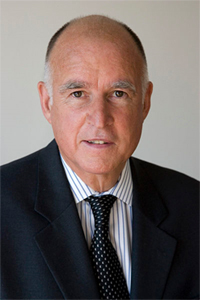
Flip-Flop & The Blame Game
One his first day on the job, and second time (1975-1983) at the governorship, Jerry Brown eventually supported Prop 13 in 1978, after initially opposing it. Brown is once again on the attacking of Prop 13 in 2011.
Brown now blames California tax payers for passing Prop 13 in 1978 for California’s current fiscal mess. Not that California’s government spent more money than they had. Instead, the governor blames tax payers for what “they” voted for 33 years ago – and that is part of the reason “why” California is in its current fiscal disaster?
“(Governor) Brown said implementation of the property-tax limits that Californians hold dear (Prop 13) has contributed to the state’s financial mess….Brown said he did not support an increase in property taxes. But he said that much of the fallout from the measure (Prop 13) should be undone and that he planned to propose a “complex reordering” of government that would address some of the problems the measure created.”
— Source: Los Angles Times, 01-05-2011
In other words, get ready for new real estate taxes from one government entity or another. Brown just said two opposite arguments in the same sentence. In the simple terms, he is for Prop 13, but it should be undone in some vague “complex reordering.” (Extra: YouTube Video of C-SPAN air date 04-05-1992 with Bill Clinton and Jerry Brown used in 2011 CA Ad-campaign.)
Gas Tax
The state is considering proposals to increase the gasoline tax from 25 cents up to $1.00 per gallon. The state believes that this effort at the $1.00 per gallon could raise $15 billion (Source: LA Times).
California already has the highest fuel taxes in the nation. The total amount of existing (state and federal) taxes per gallon of gasoline in California is 66.1 cents, and 76 cents tax per gallon for diesel fuel [Source: API.org (PDF Text Details, PDF Graphics].
Increasing fuel taxes is an unnecessary tax on financially strapped consumers. The high diesel taxes would raise the costs to truckers who truck food, consumer, and industrial products throughout the state – and the country. The result of higher diesel taxes only increase food and retail costs to consumers.
The state already raised the sales tax in 2009 by 1.00% – a “temporary tax” ending June 30, 2011. Depending where people live, their local sales tax currently range from 7.00% to 10.75% with most averaging closer to 8.75% to 9.00%.
The purpose of gas taxes in California was to build and maintain roads and highways. However in 2010, the Democratic controlled legislators and former Republican Governor Schwarzenegger passed a law that would effectively divert highway funds to the state’s general fund. This is how it works:
“the state is ending a 6 percent sales tax on gasoline and replacing it with a 17.3 cent per gallon excise tax on gas. The change allows the state to use the excise tax to pay off transit bond debt, which would free up more general fund money.”
— Source: Bloomberg/BusinessWeek
Commentary: This is really just a shell game of legal semantics to raise taxes and divert highways funds to pay for government’s overspending.
Action: No New fuel Tax
Impact on Budget: $0
Temporary Tax Hikes
This section makes the argument weather to continue the so called “temporary tax hikes.” The state has already nearly doubled the license fee on annual vehicle registration. The state currently has a “1 cent sales tax increase” (which is misleading because it is really a 1.00% tax, not a single penny added to the sales tax. Separately the state also has a 0.25% income tax surcharge and dependent credit cut.
Vehicle License Fee (VLF)
The vehicle license fee (VLF) went from .65 cents to $1.15 annual tax per $100 (a 76.92% tax increase) and is based on the purchase price of the vehicle. Thus, say for example a $20,000 car would costs about $230 year to register; and a $50,000 vehicle costs about $575 to register. There is some deprecation factored after the 1st year, but not that much until later years. There are also extra taxes such as sales tax and other fees added to the purchase of a vehicle. The exact amount is based on a number of factors including vehicle price and (sales tax) where you live.
For example, in Los Angles (90045) if one purchased a new (2010 or 2011 model year) gas-powered vehicle with a selling price of just $20,000 on January 2, 2011; the sales tax, registration and other state fees would add another 11.35% to the vehicle’s cost or $2,269.00 (Chart above). [Source: CA State Fee Calculator (original PDF of chart above)].
The state wants to raise vehicle the license fee to 2% of a car’s value, where it stood before Schwarzenegger took office (Source: LA Times). This is really a ploy that makes people think that ‘oh, lets go back to taxes before Schwarzenegger was in office.’ The ploy suggests that it moves taxes to a past date and assumes that they were lower in the past. The fact is, this move would increase the vehicle license fee by about 74% from current “temporary (new) tax” levels.
Again referring from the CA DMV chart above, the vehicle license fee tax increase went from .65 cents to current $1.15 per $100 vehicle purchase value. Thus going back to a 2.00% rate means that the VLF fee would go UP, not down, to $2.00 per $100 vehicle purchase value. Thus, using the example above, a $20,000 vehicle could see their license fee jump from $231 to $400. This tax used to be $130 (at .65 cents per $100) before the state levied the so called “temporary taxes” in 2009.
Action: No New Tax. Allow all temporary taxes to expire.
Impact on Budget: $0
Alcohol Tax
The state has proposed to increase taxes on alcohol which would range from 5 cents to 30 cents per beverage, and is expected to raise about $4.3 billion in new revenue (Source: LA Times). The so called “sin taxes” tend to be more accepted by voters. This would be an area that could tolerate a tax increase. The impact would be on those who consume alcohol.
Action: .30 cent tax per drink (as maximum proposed.)
Impact on Budget: $4.3 Billion New Revenue
Cigarette Tax
California is also looking at increasing taxes on cigarettes, now almost 90 cents per pack. The proposed increase could puff up to $4 per pack. If the maximum $4.00 rate passes, the state could generate another $2.6 billion and this apparently takes into account behavioral changes in tobacco purchases (Source: LA Times).
This is another “sin tax.” Smoking is already banned in virtually every public indoor forum, and long term consequences of tobacco use only increase state funded health care costs. The financial burden here should be placed on those impacting those costs, in this case tobacco users. Globally speaking as of 2002, about 10 million cigarettes are sold every minute. Also an important side note:
“Between 80,000 and 100,000 children worldwide start smoking every day – roughly half of whom live in Asia.”
— Source: quitsmoking.about.com
Some have argued that tax increases on tobacco products impact the poor. The response to that is the poor needs to eat, have shelter, and clothing. Smoking will only assist to terminate their lives prematurely and unnecessarily. One might argue that with all the medical and scientific facts with regard to smoking, it could be seen as a form of long-term suicide.
Action: $4.00 per pack tax (as maximum proposed.)
Impact on Budget: $2.6 Billion New Revenue
Additional Proposal: If one smokes they should not receive any state subsidized health care benefits. This should not be a tax payer burden.
Higher Taxes for High-earners?
As noted in the USA map above produced by TaxFoundation.org, California already has the second highest state income taxes after Oregon. The state is considering raising taxes from 9.3% to 10% on those with incomes over $300,000 and 11% rate for those with incomes exceeding $600,000 (Source: LA Times).
Comment: California already has the highest total combined taxes in the country, and has one of the largest state budget. With all the wealth in the state and citizens hit with the highest taxes, this has not produced a balanced budget. Taxing people more will only feed the fire to unbalanced budgets. Force the state to work within its budget. The wealthy crate jobs and subsequent tax revenue. Penalizing them can motivate them to move business, jobs, plants, or their home residence to any one of the seven tax free states. California is arguably the most unfriendly state for business. The state has reportedly lost 580,000 manufacturing jobs since 2001:
“With 580,000 lost manufacturing jobs since 2001, California is losing manufacturing jobs at a faster clip than the rest of the nation, both before and during the current national recession…Uncertainty, regulatory costs and taxes are simply too high in California” says California Manufacturers and Technology Association (CMTA).
— Orange County Register, 08-29-2009
Arguably, the state’s over-regulation and high taxes has arguably made the recession in California, worse. Michigan had two out of the three major auto companies (GM and Chrysler) file for a Chapter 11 bankruptcy, and had massive layoffs and yet California managed to do worse. The Golden State’s unemployment rate in January 2011 was 12.5%, Michigan unemployment rates was 11.7% and Nevada has the highest unemployment rates at 14.5% (Source: LA Times).
If the wealthy or anyone wants to make a volunteer tax, then they are welcome to give as much of their own money to the state as they think the state deserves beyond the existing law.
Action: No New Income Taxes.
Impact on Budget: $0
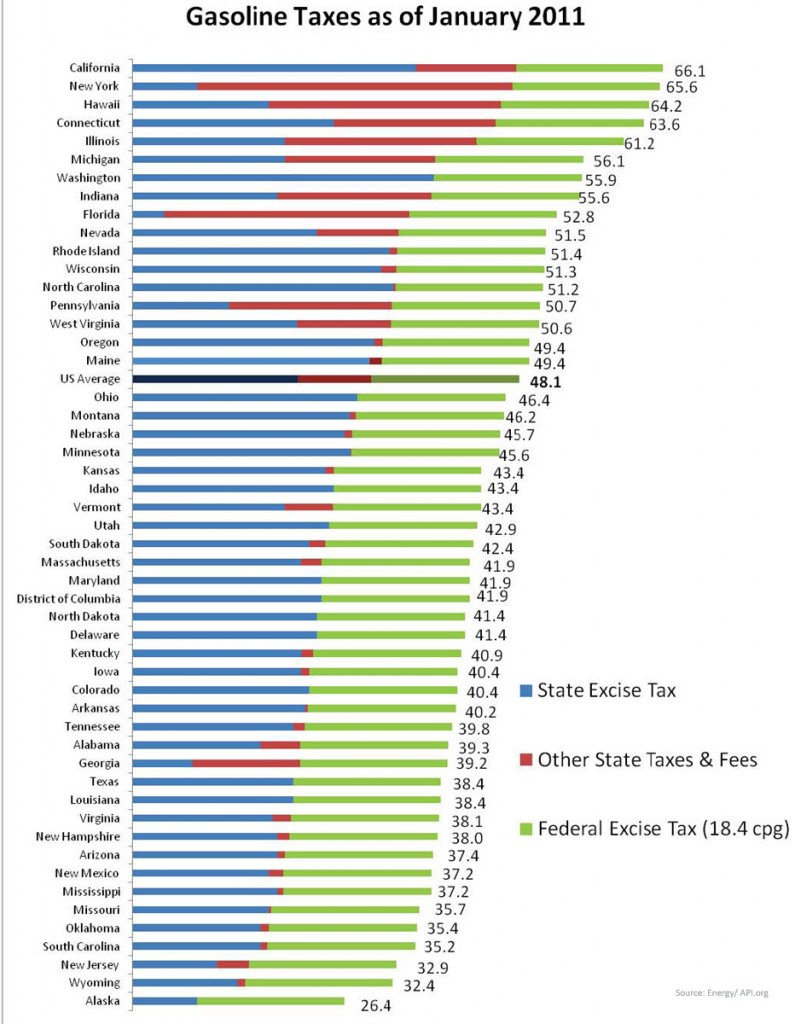
Crude Oil Tax
As if Californians were not hit with record increasing fuel and other taxes, the state is considering a new 9.9% “oil severance tax” on any crude oil that came from California land (Source: LA Times).
Comment: This will only amount to trickling down to another gas tax for consumers. California has the highest gas taxes in the USA as noted in the cart above. Higher gas taxes mean and increase cost to commuters, truckers, with the later would create an additional cost to consumers for food and retail goods and services. No more taxes.
Action: No New Tax.
Impact on Budget: $0
Business Tax Break
“Repeal a tax break that allows companies to determine their business tax formula annually” (Source: LA Times).
Comment: If anything CA should cut business and consumer taxes and make the environment more business friendly so we can create incentives to have more jobs in the state. The anti-business policies over the last 20+ years helped move Californian and other American jobs to Canada, Mexico, China and India.
Action: No New Tax.
Impact on Budget: $0
Social Security Income Tax
The state is also looking to taxing 50% of Social Security income. This move could add another $500 million in revenue to the state (Source: LA Times).
Comment (sarcasm coming): Sure let’s tax half-of social security income. Why not just tax everyone at 50%. Every person and every business will want to live in a state like that. No new taxes.
Action: No New Tax.
Impact on Budget: $0
Speeding Cameras
Install automated speeding cameras on 500 existing red light cameras across the state. Southern California’s red Light cameras seem to generate about $446 fine per occurrence [Source: PhotoEnforced.com (search cameras)]. Based on the other tax increases given in this model given, would support speed cams.
Action: Favor
Impact on Budget: $412 Million New Revenue
Result of the above proposal in total:
$969 Million surplus based on L.A. Times model; + $367 Million for eliminating rehabilitation and “education” for felons = $1.336 Billion surplus.
– No increase in personal income tax.
– No increase in corporate income tax.
– No sales tax increase.
– No DMV license fee tax increase.
– This net surplus does not include any savings from cutting administrative and higher paid state employee or other cuts as recommended in this proposal which could save the state significantly more money.
Graph the Result*
http://lat.ms/eUyttU
*Note Again: The graph does not include the $367 Million in savings of failed criminal rehab programs. Nor does it include the increased potential surplus savings noted in green block text above.
Recommendations: What to do with a $1.336 Billion Surplus:
1. Take the surplus and subtract 20% ($267.2 Million) for budget errors or forecasts that may come in below expectations.
2. Apply $250 Million toward the cost each year for AB900 (build or expand prison systems in order to comply with court-ordered overcrowding and “health care” issues.) This would help avoid harden criminals early release back in the public sector. Would rewrite the “rehabilitation” laws to test to see where they worked, and where they did not, and discontinue spending money on repeated failed programs.
3. Reserve $250 Million for an emergency fund. This money cannot go to wages, salaries, health care, or benefits of any current government or other state employee.
4. Take the rest of the surplus ($568.8 Million) and add back in critical services to the above budget proposal. The state may use the $250 Million emergency fund in critical areas giving $818.8 Million to facilitate critical needs. If there were no budget errors, the state could take that $267.2 Million reserve fund and now apply a total of $1.086 Billion back into state programs that were initially cut or eliminated.
5. The state should also consider lowering business and income taxes with some of the surplus to create incentives for people to spend and businesses to create jobs.
Now, try balancing the California budget yourself:
Link (link no longer available).
Related Articles:
The Dumbing Down of America: Change You Can’t Believe In
Net Advisor™ is a Finance & Risk Management Consultant. See bio for more info.
Short Link: https://www.netadvisor.org/?p=7428
Images/ Graphics copyright by respective owner.
Copyright © 2011-2012 NetAdvisor.org®
NetAdvisor.org® is a non-profit organization providing public education and analysis primarily on the U.S. financial markets, personal finance and analysis with a transparent look into U.S. public policy. We also perform and report on financial investigations to help protect the public interest. Read More.

